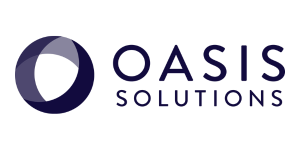Five Ways to Sell Your Sales Staff on the Benefits of CRM
1. CRM is a Memory Accelerator:
Contact management is a very basic function of CRM, and it’s a critical capability for salespeople. But with sales teams
shrinking, quotas rising and sales pros constantly begging for greater numbers of leads from marketing, at some point the data becomes overwhelming. No one can hold all of the pertinent contact information in his or her head, nor can it be managed in a spreadsheet in an easily-accessible way for long before it too becomes overwhelming. However, once that data is entered into CRM, it’s there for good—and it’s accessible, and it’s easily modified if need be. Think of it as an assistant for the sales pro’s brain; instead of devoting brain power to remembering where data on prospects and customers are hiding on the desk or on the desktop, sales pros can go to a single source, get the data they need quickly—and then devote the rest of their mental energy to selling.
2. CRM Organizes Your Activities:
Sales people have complicated calendars, especially if what they sell has a long sales cycle. That can result in a reminder system to help them follow up with calls or collateral when the time is right. But these are usually home-grown systems, and home grown systems often start to groan under heavy burdens. Increase the number of leads you’re working on by 30 percent, and will your jury-rigged Outlook-based reminder system hold up? CRM is great for building these reminders into your daily process, and they can help you standardize your sales processes so that you never forget to schedule a follow-up call. Moreover, they also provide you with a record of your follow-up activities. Even if you don’t include notes from a call, the fact that you know you made it is useful—and probably more than you’re tracking right now.
CRM also helps lessen the burden other reports have traditionally placed on the sales staff. Examples include the weekly sales funnel status update and forecast updates. When selling data is entered into CRM, the application automates these activities entirely. If gives the sales staff more time to sell—not less—and makes it easier for managers to assemble their forecasts, giving them more time to act as coaches and mentors.
3. CRM Lets You Share Intelligence:
Of course, sales people are fiercely jealous of the accounts they’re working. That makes sense. However, it also makes sense to compare notes. If one selling approach is working, why keep it under your hat? Being the most successful sales person in a failing sales organization is gratifying only up until the point that your company declares bankruptcy. Tracking selling patterns allows sales people to see what works for them, and what might work for others; instead of having the sales manager impose a set of “best practices,” sales people can develop and share them among themselves. CRM also makes it much easier to get productive when territories shift or when responsibilities change; instead of learning the lay of the land from scratch, the record of the business’s behavior in those regions or markets has been captured and that data is immediately available to help get the sales pro who’s inheriting them up to speed.
4. CRM Gives You Access to Social Data:
If you’re in sales, especially on the B2B side, you may already check on prospects by looking them up on LinkedIn. CRM is becoming increasingly attuned to the social world—and instead of having to look up prospect or customers’ social profiles manually each time, socially enabled CRM applications can pull this data into the customer record for posterity. Some CRM applications now include sales intelligence tools like InsideView that automatically provide social media data each time a customer’s record is opened. Instead of having to fish through the entire social media world, these emerging tools allow sales people to get the information that’s most useful to them rapidly, allowing them to devote more time to selling and less time to looking things up on the Internet.
5. CRM Ensures Recurring Sales:
While the immediate benefits to sales are nice, there’s a behind-the-scenes benefit to sales are great as well. The customer record is useful to customer support, which can understand the relationship between the customer and the
company and use it to provide better service. It’s also a big help to marketing, which can better segment the customer
audience for its messages and use the data to hunt down better qualified leads. As a result, sales people will encounter happier customers when it comes time to renew a contract, sell a replacement product or upsell a customer to a new product or service. Support and marketing may not be the sales person’s responsibility, but how well those responsibilities are carried out have a direct impact on the sales person’s success with recurring business. By starting
the process of documenting customer relationships, sales people are laying the groundwork for success today and
down the road.
Find the entire Whitepaper on the Oasis Solutions Group website


